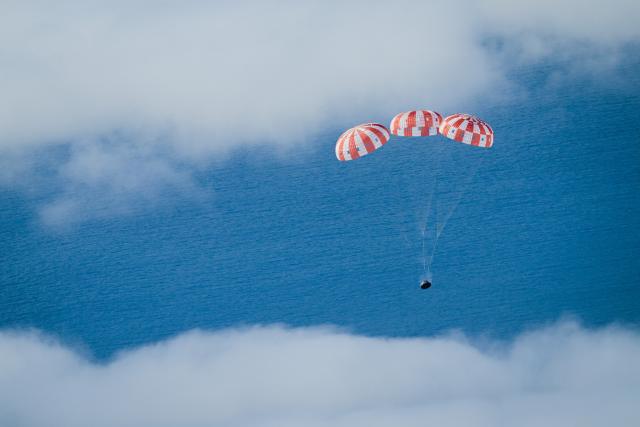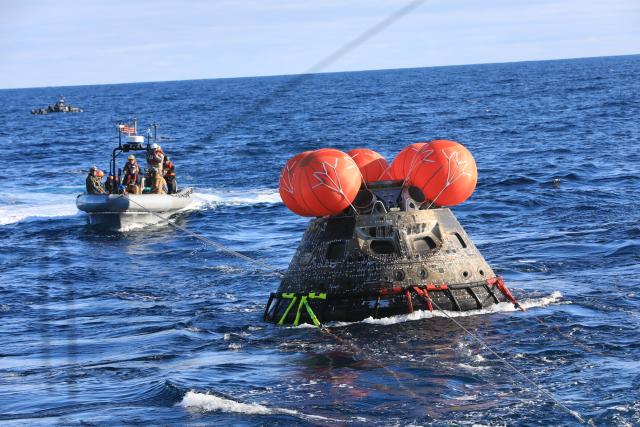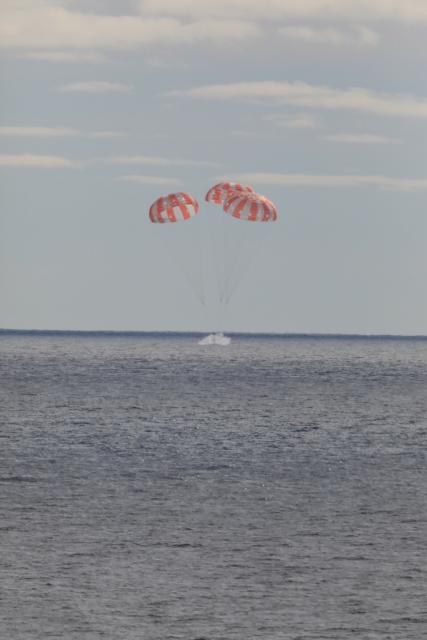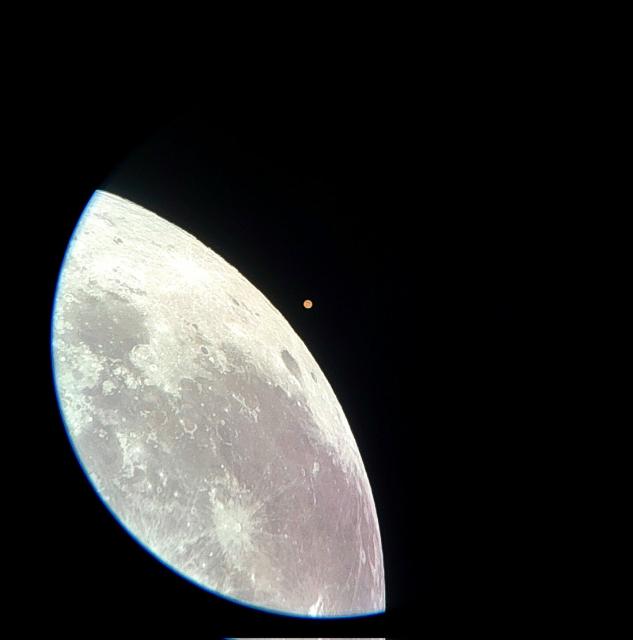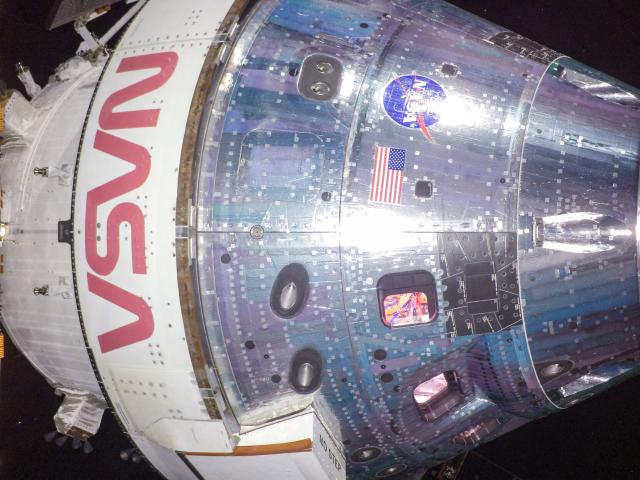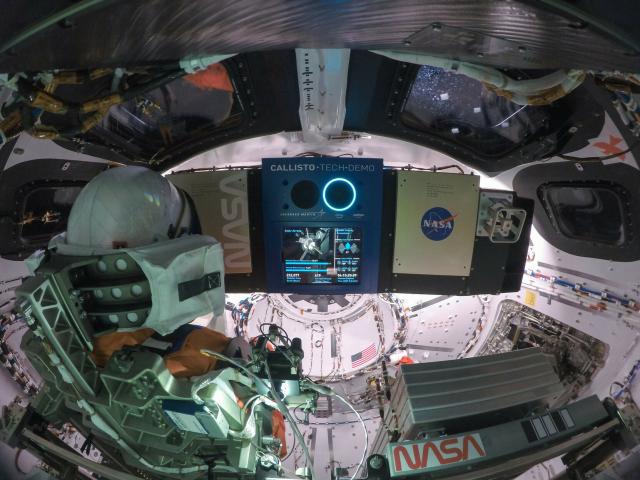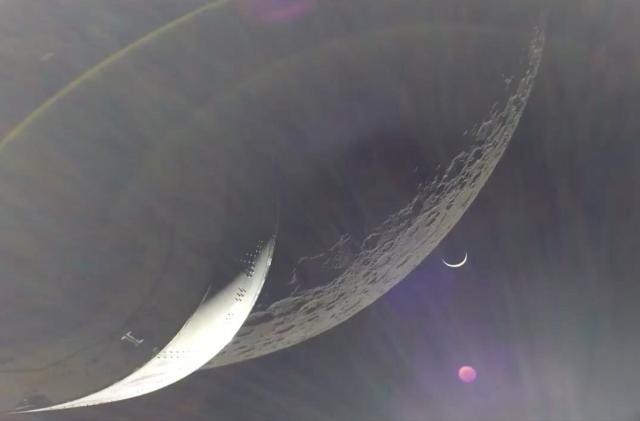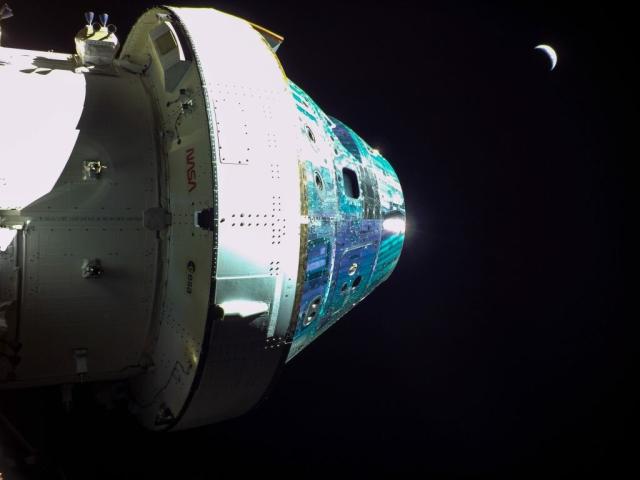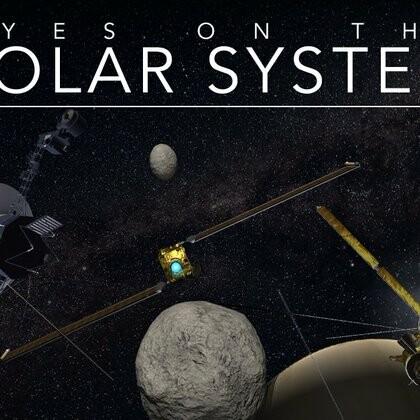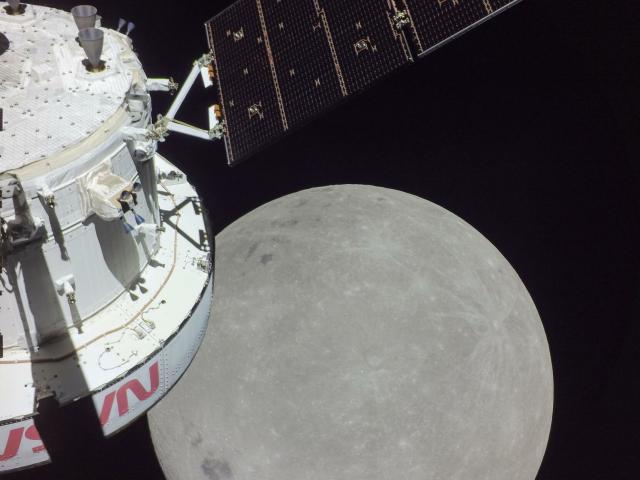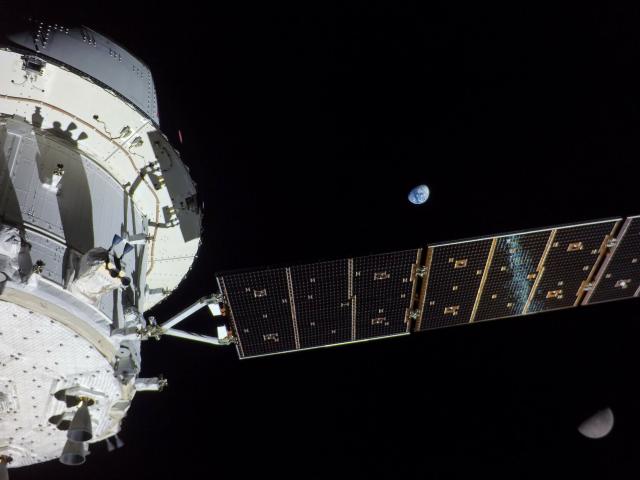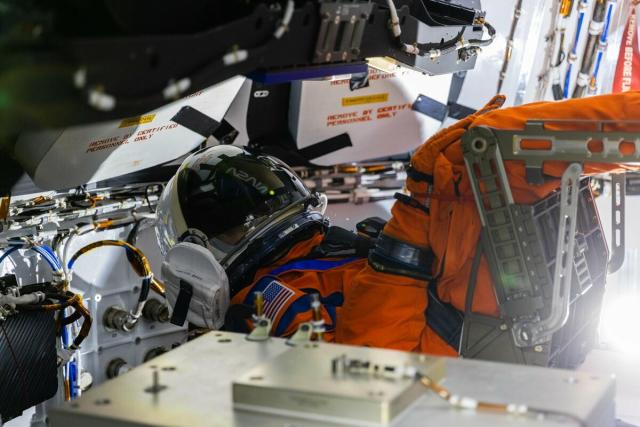Search
Items tagged with: artemis
Did you miss @NASA_Orion splash down yesterday after its 1.4-million-mile (2.3-million-km) journey around the Moon and back again?
Check out our HD gallery of #Artemis I photos: flic.kr/s/aHBqjAfKs1
#NASA
#Artemis I is safely back on Earth—so what's next for Artemis as we get ready to explore the Moon and Mars?
Our experts will answer your @NASAArtemis questions in a @reddit AMA tomorrow, Dec. 13, at 2pm ET (1900 UTC). Join us on /r/IAmA: teddit.pussthecat.org/r/IAmA
#NASA
As we celebrate the successful completion of the #Artemis 1 mission today, 50 years ago at this very moment, the #Apollo17 lunar module landed on the Moon.
Experience the landing: apolloinrealtime.org/17/?t=112…
#Apollo50th #synchronicity
#NASAhistory
Apollo 17 in Real Time
A real-time interactive journey through the last landing on the Moon. Relive every moment as it occurred in 1972.Apollo 17 in Real Time
#NASAMoon
SVS: Flying over the Taurus-Littrow Valley
On December 11, 1972, Apollo 17 astronauts Eugene Cernan and Harrison Schmitt landed their lunar module, Challenger, in a lunar valley named for the Taurus mountain range and the nearby Littrow crater.go.nasa.gov
.@NASA_Orion is back, and with it are our test manikins: Commander Moonikin Campos, Helga, and Zohar, who have been collecting data on what future #Artemis astronauts will experience during the flight.
Not to mention Snoopy, our zero-gravity indicator. nasa.gov/moonikin-comic
#NASA
Splashdown.
The @NASA_Orion spacecraft successfully completed a parachute-assisted splashdown in the Pacific Ocean at 12:40pm ET (17:40 UTC) as the final major milestone of the #Artemis I mission. go.nasa.gov/3Fl7kzQ
#NASAArtemis #Artemis
Splashdown! NASA’s Orion Returns to Earth After Historic Moon Mission
NASA’s Orion spacecraft splashed down in the Pacific Ocean, west of Baja California, at 9:39 a.m. PST Sunday after a record-breaking mission, traveling more than 1.Gerelle Dodson (NASA)
#NASAArtemis #Artemis
NASA Advances Artemis Moon Rocket Production for Future Missions
NASA is moving forward with Space Launch System (SLS) production and assembly activities for future Artemis missions.Lee Mohon (NASA)
Thank you for sharing this #NASAMoonSnap with us!
Our #Artemis missions will lay the groundwork for taking the next giant leap — sending astronauts to Mars.
#NASAArtemis #Artemis
After evaluating the weather, the #Artemis I mission management team decided on a landing site in the Pacific Ocean near Guadalupe Island.
Splashdown is expected at 12:39pm ET (17:39 UTC) on Dec. 11: go.nasa.gov/3FgTnTv
#NASAArtemis #Artemis
.@NASA_Orion is heading home. What can we expect when the spacecraft splashes down off the coast of California on Dec. 11?
Check out "The Adventures of Moonikin Campos and Friends" webcomic to learn more: nasa.gov/moonikin-comic
#NASAArtemis #Artemis
LIVE NOW: Our experts are previewing the upcoming entry, descent, and splashdown of the @NASA_Orion spacecraft.
The #Artemis I mission is scheduled to conclude at 12:40pm ET (17:40 UTC) on Dec. 11 when Orion splashes down in the Pacific Ocean. twitter.com/i/broadcasts/1ZkJz…
#NASA
Thank you so much for this perfect example of #NASAMoonSnap Expert Mode — capturing the Moon every day of a lunar cycle!
Check out some of @NASA_Orion’s captures of the Moon during the course of the #Artemis I mission: flic.kr/s/aHBqjAfKs1
#NASAArtemis #Artemis
“These images reveal with stunning humbling sublimity the triumph of the human spirit and breaking beyond the confines of the Earth.”
@HenryLouisGates reflects on the #Artemis I mission.
#NASAArtemis #Artemis
LIVE NOW: Following today's close flyby of the Moon, our experts are giving an update on the #Artemis I mission.
The @NASA_Orion spacecraft is expected to splash down in the Pacific Ocean on Dec. 11. twitter.com/i/broadcasts/1BRKj…
#NASA
One day in the solar system: Here are a few views captured – today – by @nasa spacecraft. 🛰📸🧵
This is the Moon and the distant crescent Earth as seen today by the @NASA_Orion spacecraft during the #Artemis I mission. nasa.gov/artemis
#NASASolarSystem
NASA: Artemis
Artemis is the name of NASA's program to return astronauts to the lunar surface. We are going forward to the Moon to stay.NASA
On flight day 19 for our @NASA_Orion spacecraft, four limiters responsible for downstream power switched off due to an issue with a power conditioning distribution unit.
The system is healthy, and there was no interruption to any critical systems: go.nasa.gov/3HaKBco
#NASAArtemis #Artemis
You can also track the #Artemis I mission in our "Eyes on the Solar System" real-time 3D simulation: eyes.nasa.gov/apps/solar-syste…
[Video embedded in original tweet]
#NASASolarSystem
Eyes on the Solar System - NASA/JPL
Explore the 3D world of the Solar System. Learn about past and future missions.Eyes on the Solar System - NASA/JPL
We have retrieved signal with @NASA_Orion after an expected loss of signal when the spacecraft flew directly behind the Moon.
You can see Earth in the distance. That's us. #Artemis
nasa.gov/artemislive
#NASA

Live Video Stream from the Artemis I Orion Spacecraft
Periodic live video from the Artemis I flight test.Brian Dunbar (NASA)
LIVE NOW: @NASA_Orion is harnessing the Moon’s gravity to accelerate back toward Earth.
The spacecraft is expected to fly about 79 miles above the lunar surface at 11:42am ET (1642 UTC). #Artemis twitter.com/i/broadcasts/1yoKM…
[Video embedded in original tweet]
#NASA
#NASAArtemis #Artemis
#NASA
Follow NASA’s Artemis I Moon Mission: Live Tracker, Latest Images, and Videos
On Nov. 16, 2022, the Artemis I mission officially began with the launch of the Orion spacecraft atop the Space Launch System rocket. The rocket and spacecraft lifted off from historic Launch Complex...nasa (Tumblr)
As we prepare for future #Artemis missions, our astronauts aboard the @Space_Station are performing experiments that will lay the foundation of long-duration space travel.
Learn about the challenges and solutions our astronauts could help to address: go.nasa.gov/3Urehou
#NASAArtemis #Artemis

Space Station Solutions for Artemis Missions to the Moon and Beyond
Getting a spacecraft to the Moon or Mars is quite literally rocket science.Ana Guzman (NASA)
.@NASA_Orion will reenter the lunar sphere of influence tomorrow, on Dec. 3, making the Moon the main gravitational force acting on the spacecraft.
The spacecraft will exit the lunar sphere of influence for a final time on Dec. 6. #Artemis go.nasa.gov/3OWzsxG
#NASAArtemis #Artemis
Don’t miss the remaining coverage of the #Artemis I Moon mission: go.nasa.gov/3uiYzBd
Dec. 5, 9am ET (1400 UTC): Return lunar flyby
Dec. 5, 5pm ET (2200 UTC): Flyby debrief
Dec. 8, 5pm ET (2200 UTC): Splashdown preview
Dec. 11, 11am ET (1600 UTC): @NASA_Orion splashdown
#NASA
NASA Sets Coverage of Orion’s Historic Moon Mission Return, Splashdown
NASA will provide live coverage of the Artemis I uncrewed Orion spacecraft’s return flyby of the Moon on Monday, Dec. 5, as well as its return to Earth on Sunday, Dec. 11.Roxana Bardan (NASA)
The purposeful passengers aboard @NASA_Orion — Commander Moonikin Campos, Helga, and Zohar — have a very unique view of the Moon during the #Artemis I mission.
They recently "live-tweeted" their experience. Check it out: twitter.com/i/events/159836215…
#NASAArtemis #Artemis
#NASAArtemis #Artemis
NASA: Artemis I
Artemis I will be the first in a series of increasingly complex missions to build a sustained human presence at the Moon for decades to come.NASA
LIVE NOW: The @NASA_Orion spacecraft is performing the first of two maneuvers to exit lunar orbit and begin its journey from the Moon back to Earth.
The burn is scheduled to begin at 4:53pm ET (21:53 UTC). #Artemis twitter.com/i/broadcasts/1mnxe…
#NASA
LIVE NOW: The @NASA_Orion spacecraft is performing the first of two maneuvers to exit lunar orbit and begin its journey from the Moon back to Earth.
The burn is scheduled to begin at 4:53pm ET (21:53 UTC). #Artemis twitter.com/i/broadcasts/1mnxe…
[Video embedded in original tweet]
#NASA
LIVE NOW: We're previewing @NASA_Orion’s scheduled departure from its distant retrograde orbit around the Moon, which will begin on Thursday, Dec. 1 at 4:53pm ET (21:53 UTC). #Artemis twitter.com/i/broadcasts/1kvJp…
[Video embedded in original tweet]
#NASA
#NASA
